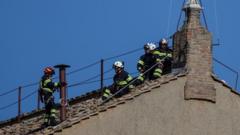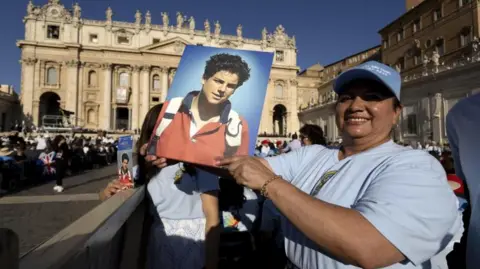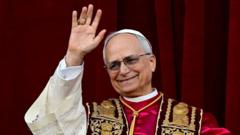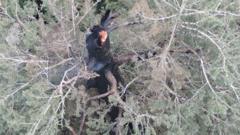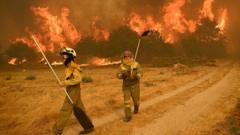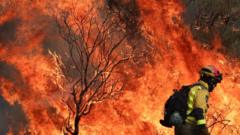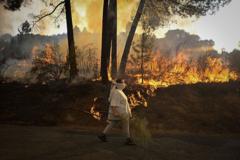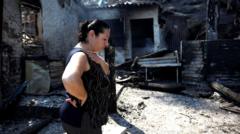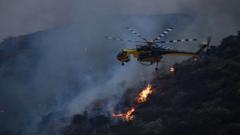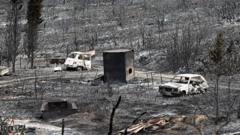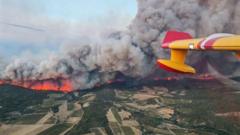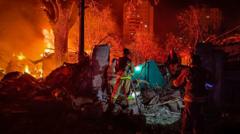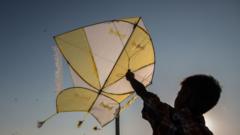The ritual, steeped in centuries-old tradition, combines both engineering innovation and spiritual significance.
The anticipation surrounding a papal election reaches a peak during the signal process from the Sistine Chapel, capturing the attention of millions worldwide. A black smoke signal indicates that a new pope has not been elected, while white smoke signifies a successful selection, heralding the famous declaration of "Habemus Papam” (We have a pope).
However, while the drama of smoke rising captivates onlookers, the intricate details that make this communication method possible are often overlooked.
According to experts, the Vatican's process includes not just the chimney and stove but also custom-made chemical mixtures that create the required smoke signals. As engineers, technicians, and fire crews meticulously prepare, standing members of the Church organize smoke tests and rehearsals to ensure precision when the votes are cast.
This upcoming conclave on May 7—prompted by the recent death of Pope Francis — will see cardinals gather for a special Mass, before proceeding inside the Sistine Chapel to commence voting within a tradition that dates back to the 15th century. The Church has consistently used smoke to maintain confidentiality while simultaneously conveying its message to the public.
In her comments to the BBC, theology professor Candida Moss highlighted that the use of smoke as a communication form stems from ancient traditions of human connection to the divine, making the moment feel even more participatory for the gathered crowd in St Peter's Square.
The development of the equipment requires careful craftsmanship. Special stoves are installed temporarily to handle the burning of ballots and the creation of smoke. They are connected to a flue that leads smoke outside, with fire crews ensuring the chimney is both functional and discreetly installed so as to preserve the integrity of the Sistine Chapel’s historical aesthetics.
According to Kevin Farlam, a structural engineer involved in the setup, a single error in the installation can escalate into a significant international issue. In order to avoid mishaps, experts perform smoke tests leading up to the conclave, with Vatican firefighters on standby in case something goes wrong.
For the smoke to adhere to its distinct coloration, a mix of chemical compounds has been developed over time. Black smoke is achieved using a mixture of potassium perchlorate and anthracene, while white smoke incorporates potassium chlorate, lactose, and resin. Such precision helps prevent miscommunication and confusion, ensuring clarity in what is traditionally an emotion-filled moment.
While suggestions to modernize aspects of this process have floated around—such as using lights or digital alerts—the Vatican seems determined to hold on to its traditions. Professor Moss articulates that the smoke signals bear weight beyond mere communication, serving as a conduit for a long-standing ritual recognized worldwide.
The anticipation surrounding a papal election reaches a peak during the signal process from the Sistine Chapel, capturing the attention of millions worldwide. A black smoke signal indicates that a new pope has not been elected, while white smoke signifies a successful selection, heralding the famous declaration of "Habemus Papam” (We have a pope).
However, while the drama of smoke rising captivates onlookers, the intricate details that make this communication method possible are often overlooked.
According to experts, the Vatican's process includes not just the chimney and stove but also custom-made chemical mixtures that create the required smoke signals. As engineers, technicians, and fire crews meticulously prepare, standing members of the Church organize smoke tests and rehearsals to ensure precision when the votes are cast.
This upcoming conclave on May 7—prompted by the recent death of Pope Francis — will see cardinals gather for a special Mass, before proceeding inside the Sistine Chapel to commence voting within a tradition that dates back to the 15th century. The Church has consistently used smoke to maintain confidentiality while simultaneously conveying its message to the public.
In her comments to the BBC, theology professor Candida Moss highlighted that the use of smoke as a communication form stems from ancient traditions of human connection to the divine, making the moment feel even more participatory for the gathered crowd in St Peter's Square.
The development of the equipment requires careful craftsmanship. Special stoves are installed temporarily to handle the burning of ballots and the creation of smoke. They are connected to a flue that leads smoke outside, with fire crews ensuring the chimney is both functional and discreetly installed so as to preserve the integrity of the Sistine Chapel’s historical aesthetics.
According to Kevin Farlam, a structural engineer involved in the setup, a single error in the installation can escalate into a significant international issue. In order to avoid mishaps, experts perform smoke tests leading up to the conclave, with Vatican firefighters on standby in case something goes wrong.
For the smoke to adhere to its distinct coloration, a mix of chemical compounds has been developed over time. Black smoke is achieved using a mixture of potassium perchlorate and anthracene, while white smoke incorporates potassium chlorate, lactose, and resin. Such precision helps prevent miscommunication and confusion, ensuring clarity in what is traditionally an emotion-filled moment.
While suggestions to modernize aspects of this process have floated around—such as using lights or digital alerts—the Vatican seems determined to hold on to its traditions. Professor Moss articulates that the smoke signals bear weight beyond mere communication, serving as a conduit for a long-standing ritual recognized worldwide.

